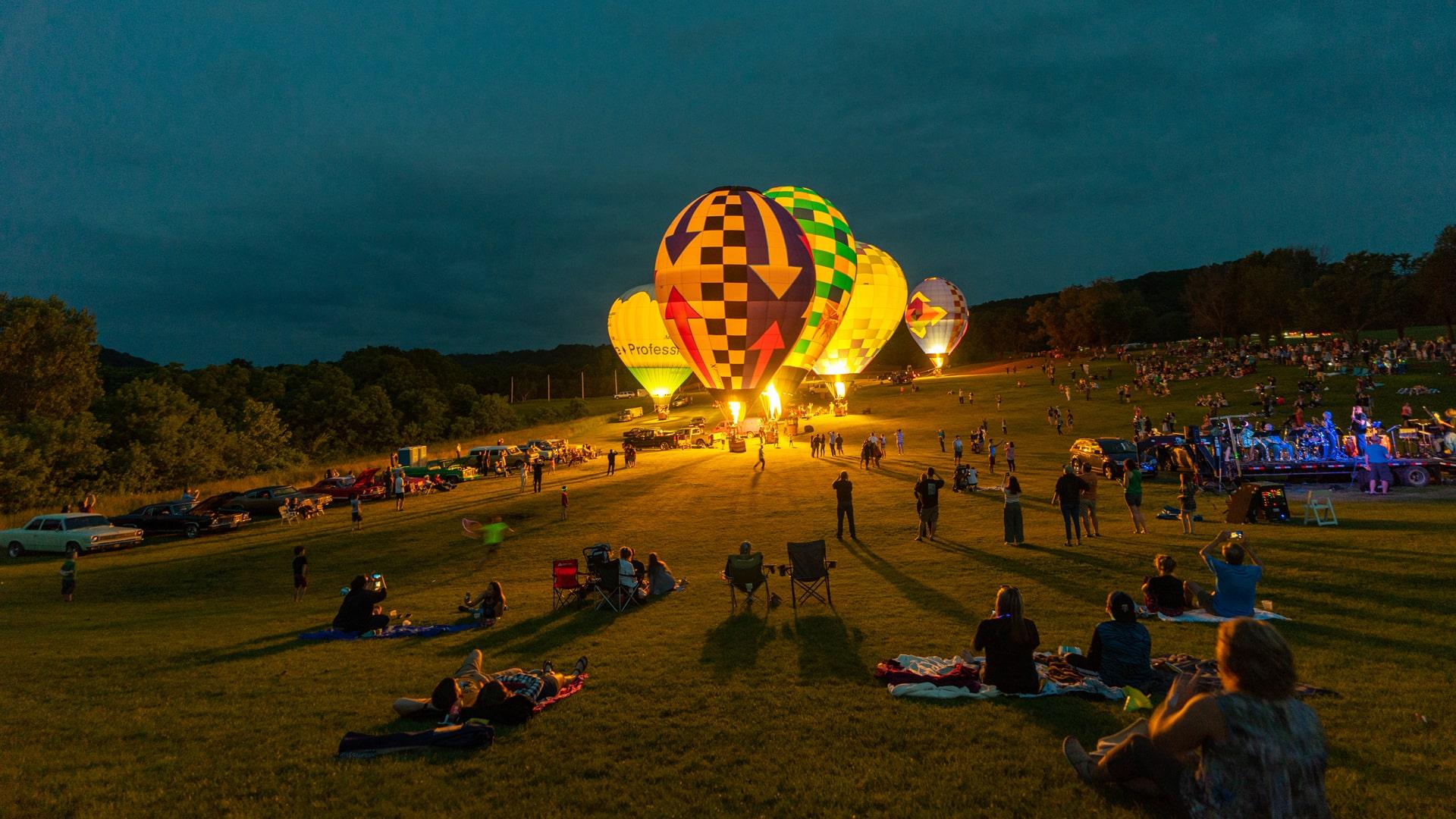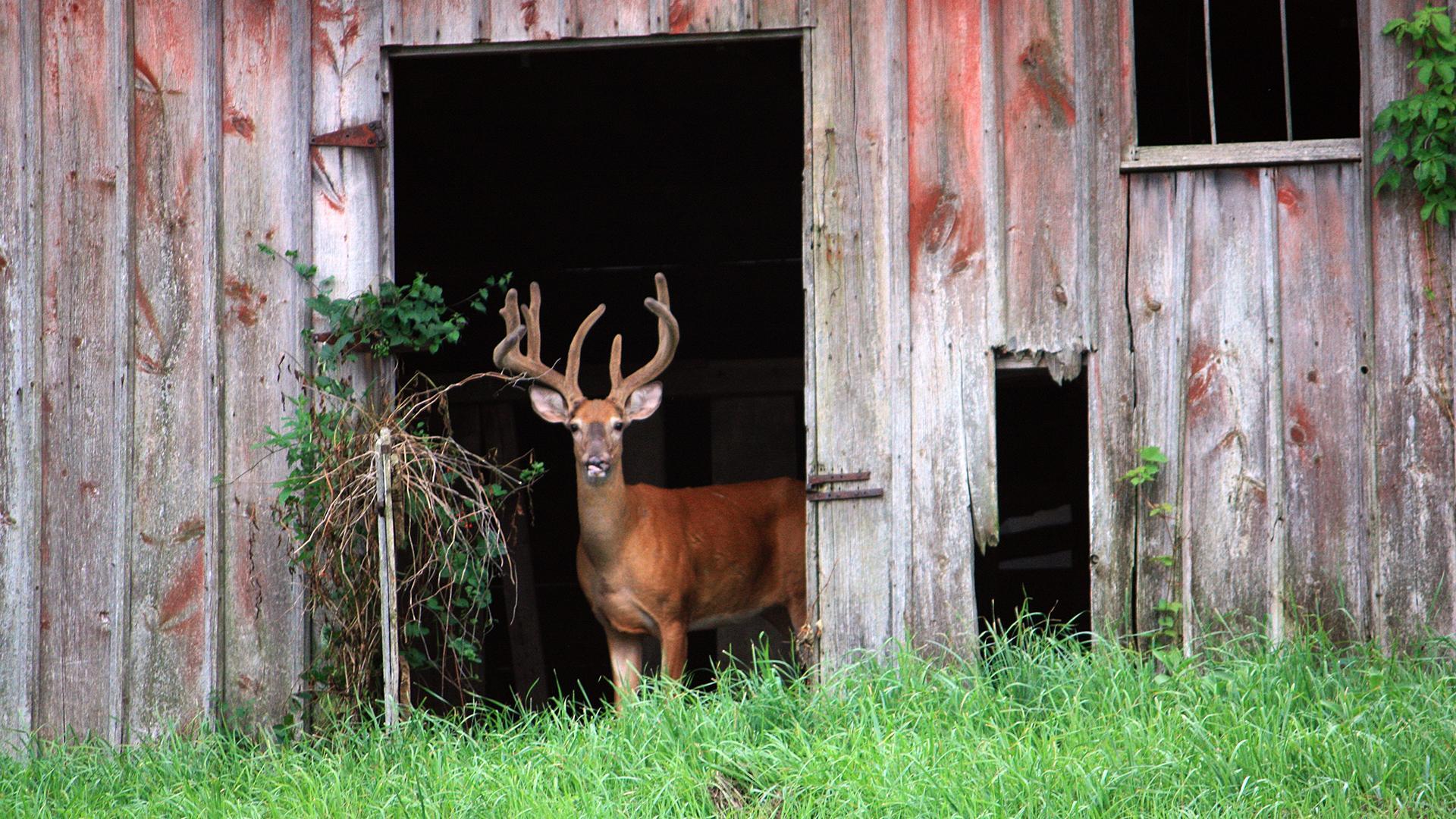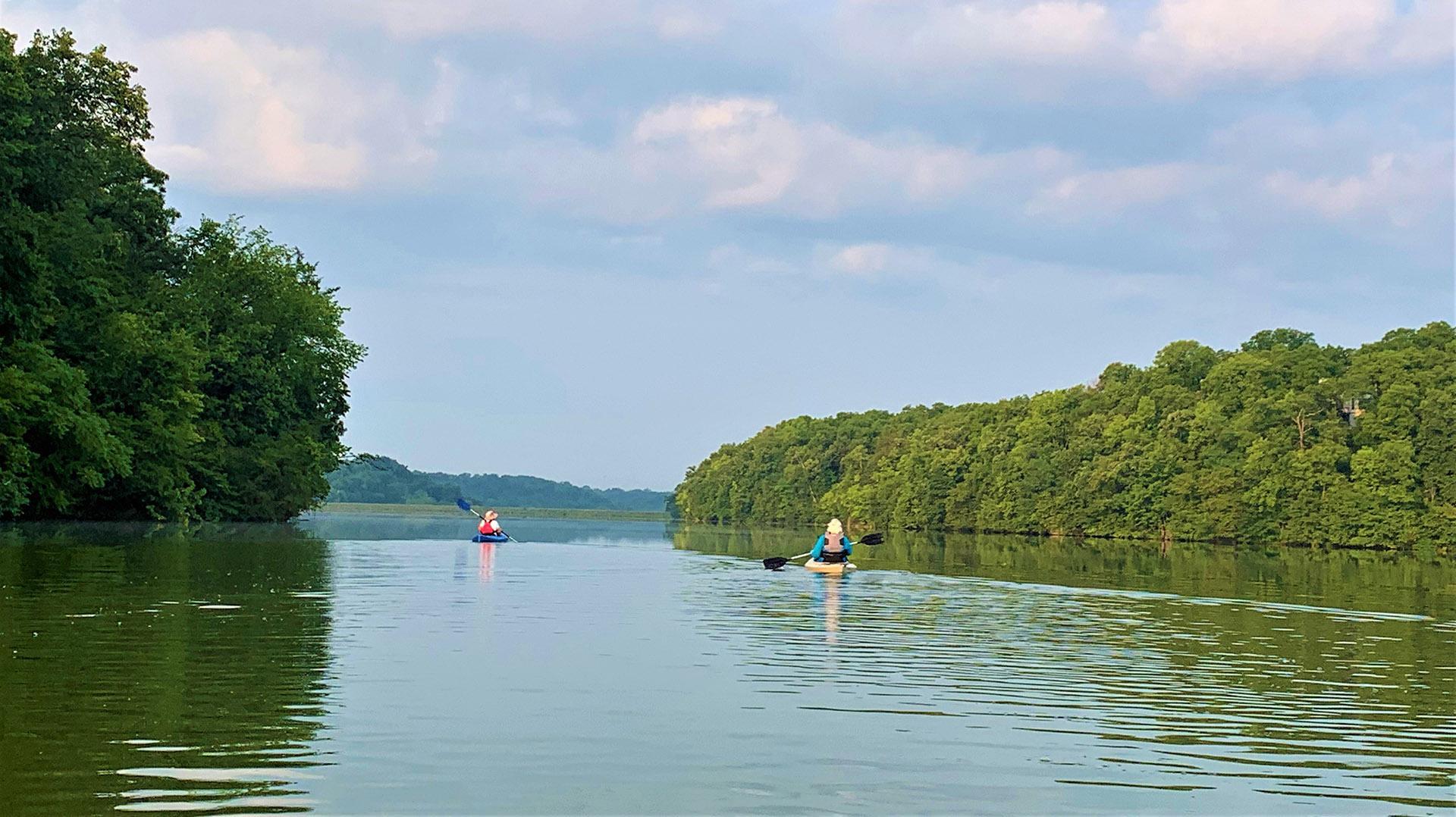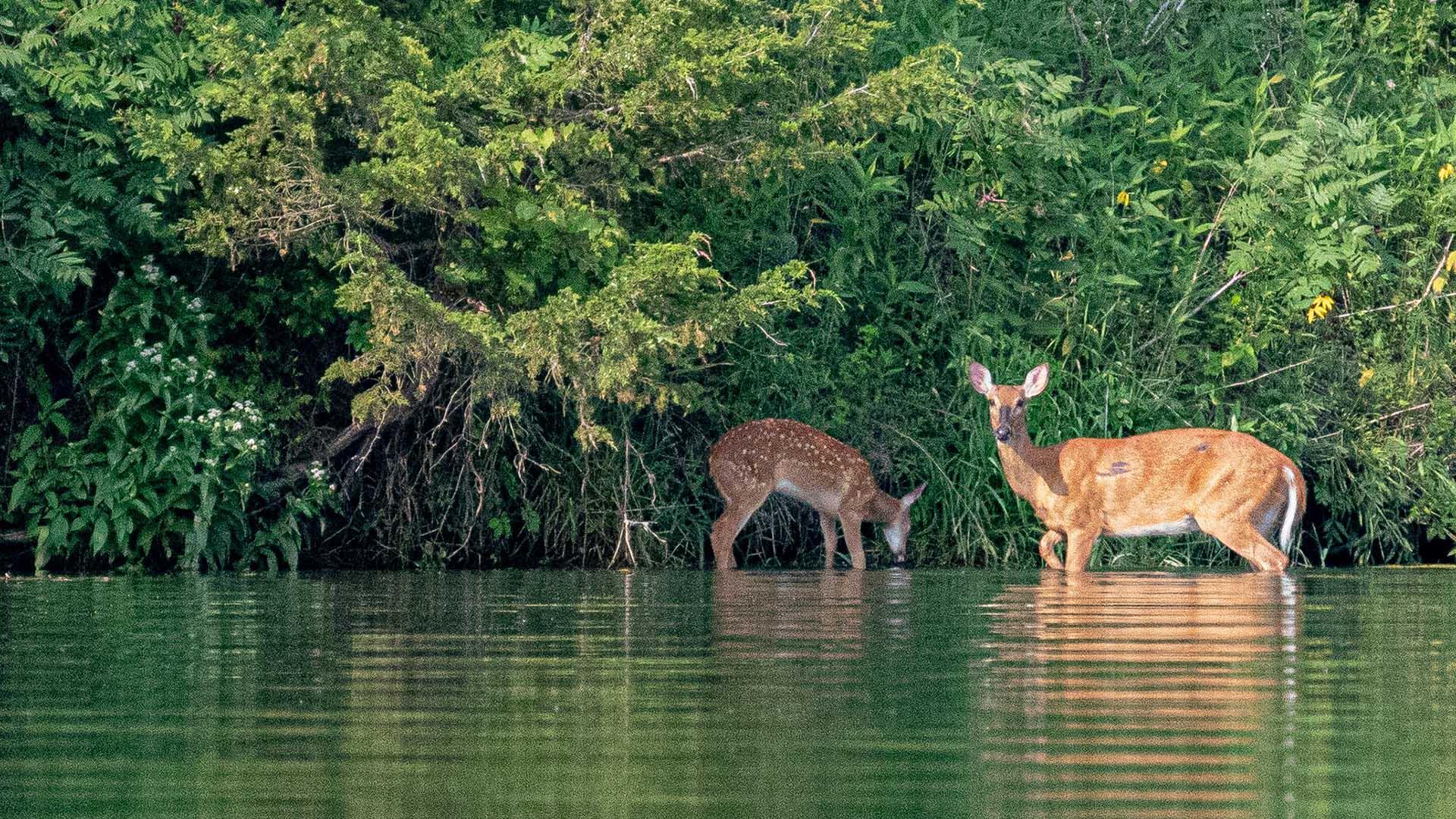Greenspace
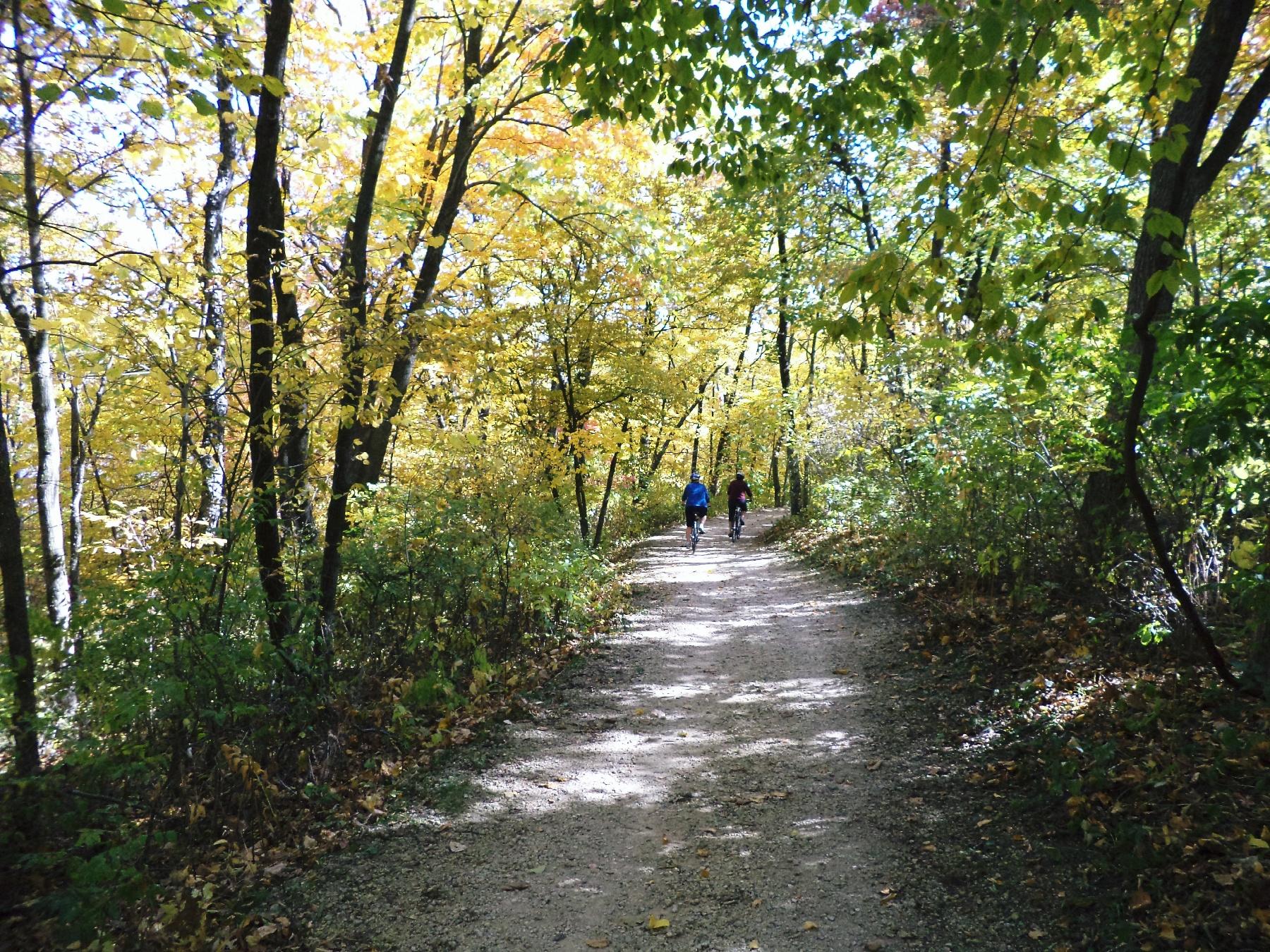
And Trail System
More than 1,700 acres of Greenspace (open spaces) scattered throughout The Territory are maintained as natural habitat and protected from future development, including the 7-mile shoreline of Lake Galena. Wild turkey, white-tailed deer and red fox are frequently seen, along with hawks and eagles soaring overhead. Woods and meadows are lush with grasses, flowers, ferns, shrubs and trees May through October. With 24 miles of trails winding through Greenspace, hikers can spend a day enjoying the serenity and solitude that only nature can provide.
The trails closest to Eagle Ridge Resort & Spa are paved and suitable for jogging, power walking and other activities that require sure footing. Some of these trails also have lookout platforms for beautiful panoramas of Lake Galena and the countryside.
The majority of the trails are natural and not paved. They are rugged and sometimes wet and slippery depending on prevailing weather conditions. However, that just adds to their charm! Hiking and horseback riding are two of the most popular pastimes here and can be enjoyed year-round. Although the trails are not groomed for cross-country skiing, Association members and their guests can break their own trails and discover the beauty and winter solitude of The Galena Territory.
*An amenity card and parking pass are required to access all Galena Territory Association facilities and common properties
(Lake Galena, Thunder Bay Falls, Owners' Club Complex, Greenspace & Trails and both of The Territory refuse centers).
Greenspace & Trails Reports
What You Plant Matters
The ornamental tree and shrub species that escape from yards and gardens (which then occur in Greenspace areas) that I observe most frequently are burning bush and callery pear. Japanese barberry and amur maple are also problematic in some areas.
Are you planning a new landscape or looking to replace these species or others, to give your yard an updated look? Remember: what you plant matters! Plants in our yards become part of our ecosystem once they are installed and should support our native insects, our primary herbivores. Insects are crucial food sources for songbirds and other wildlife and are our primary pollinators.
At one time, it was considered a faux pas if insects ate holes in our landscape plants. Therefore, most traditional ornamental species that have been sold for years were specifically introduced because they were unpalatable to North American insects. This includes the species listed above and dozens of others.
According to entomologist Douglas Tallamy, up to 90 percent of our native phytophagous insects are specialist feeders, relying on specific host plants or plant lineages that they co-evolved with (Bringing Nature Home, 2007). To best support these invertebrates, we should plant native species in our yards and preserve native species in our woods and other wild areas.
As mentioned in an earlier article, the most striking characteristic of burning bush is its red fall foliage. There are native species that also produce anthocyanins, the phytochemical that gives plants a beautiful red color every fall. These include:
Red chokeberry (Aronia arbutifolia): 6-8 feet tall and wide. White flowers in May. Red fruits persist.
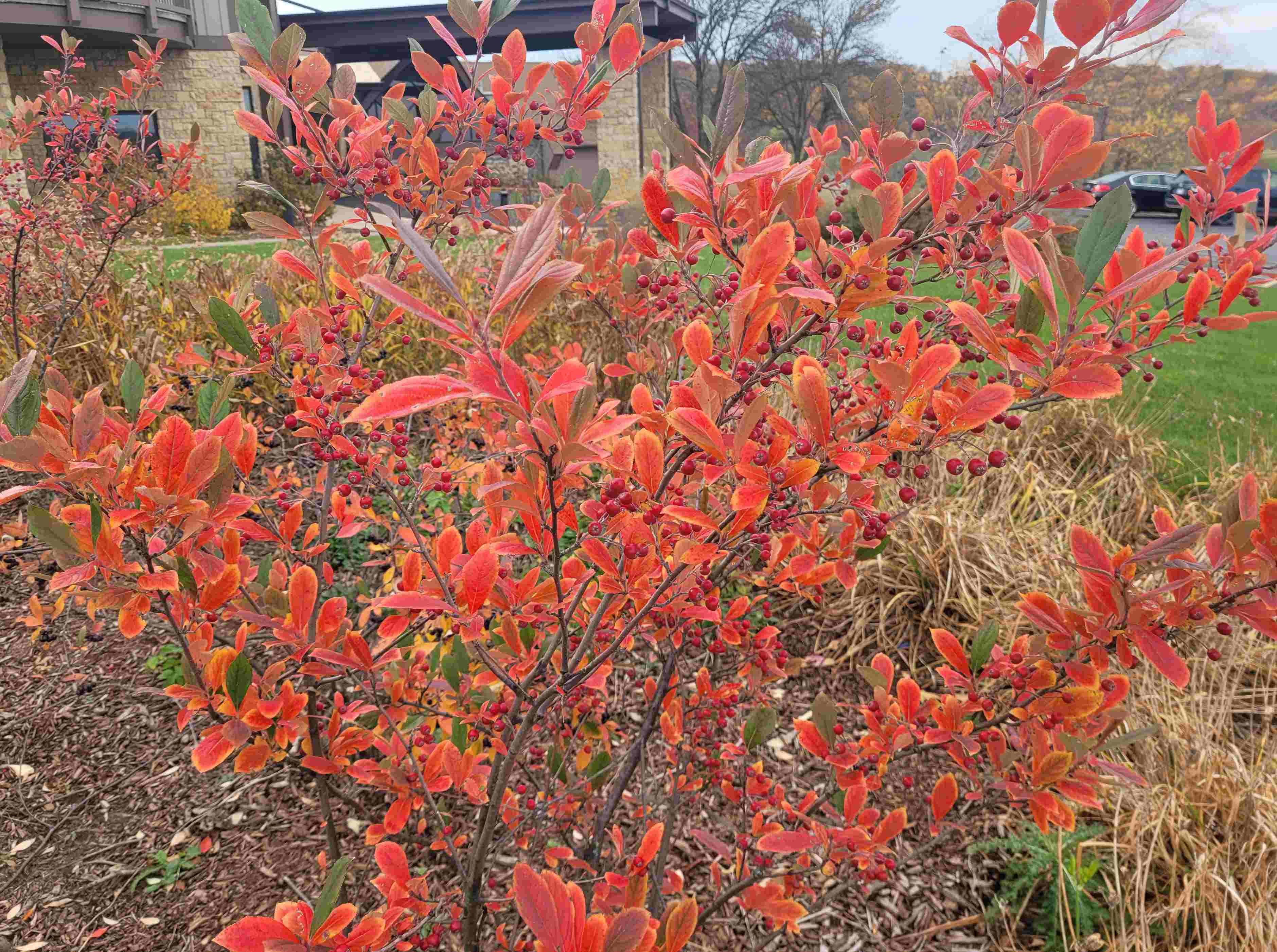
Black chokeberry (Aronia melanocarpa): 4-8 feet tall and wide. White flowers in May. Black fruits persist.
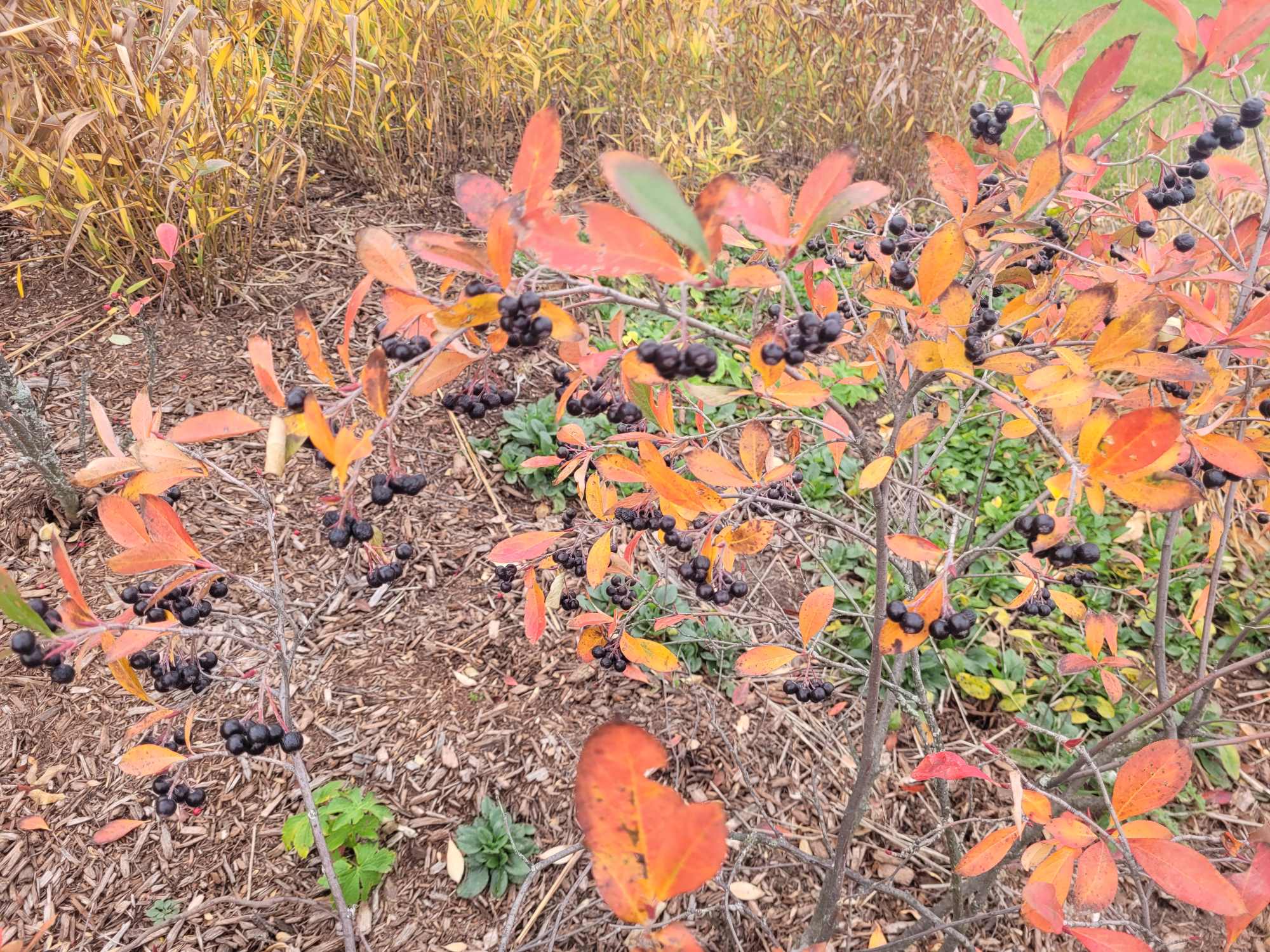
Grey dogwood (Cornus racemosa): 4-8 feet tall and 8-12 feet wide. White flowers in June and July. White fruits persist. Maroon to purple fall color.
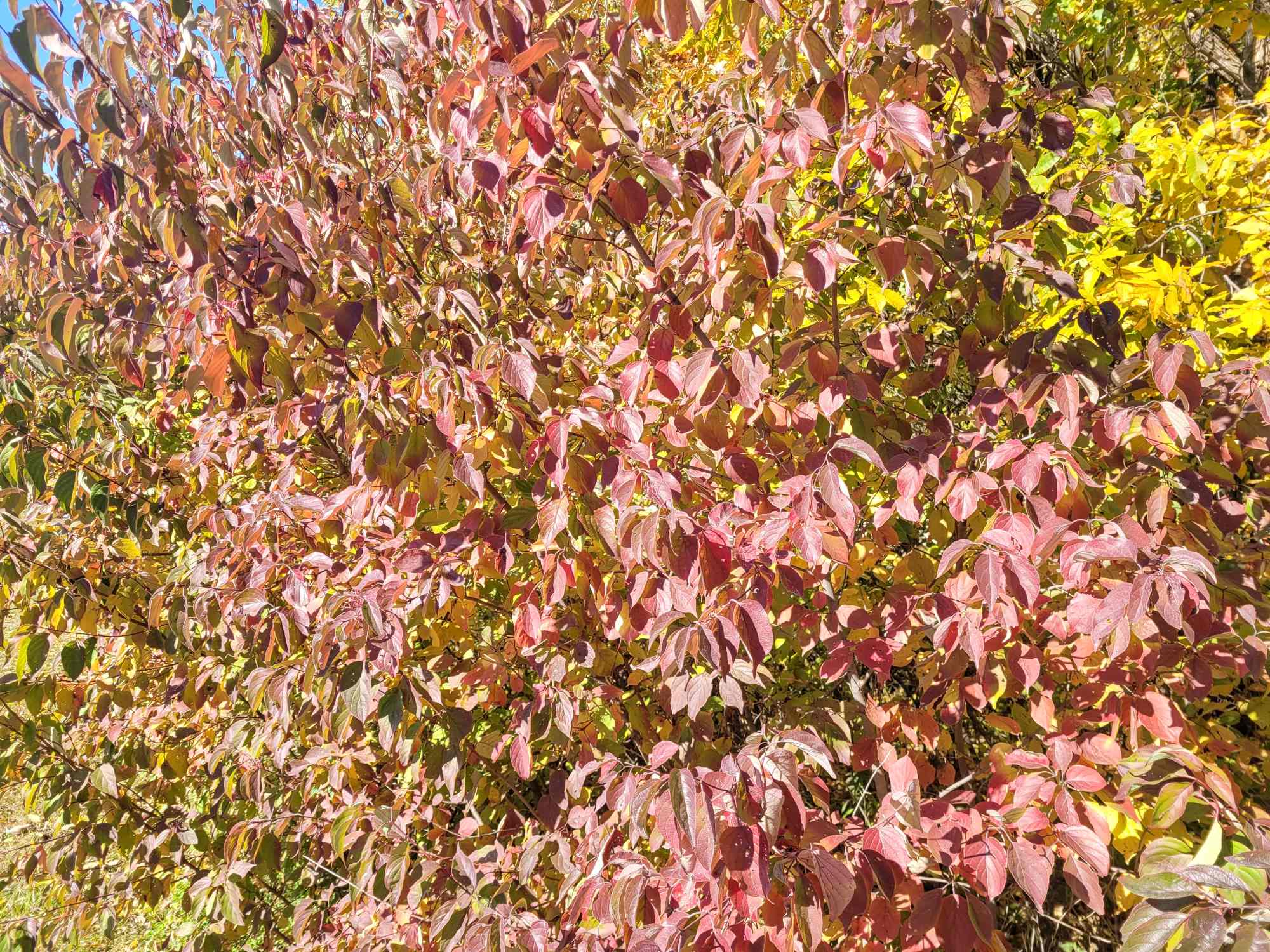
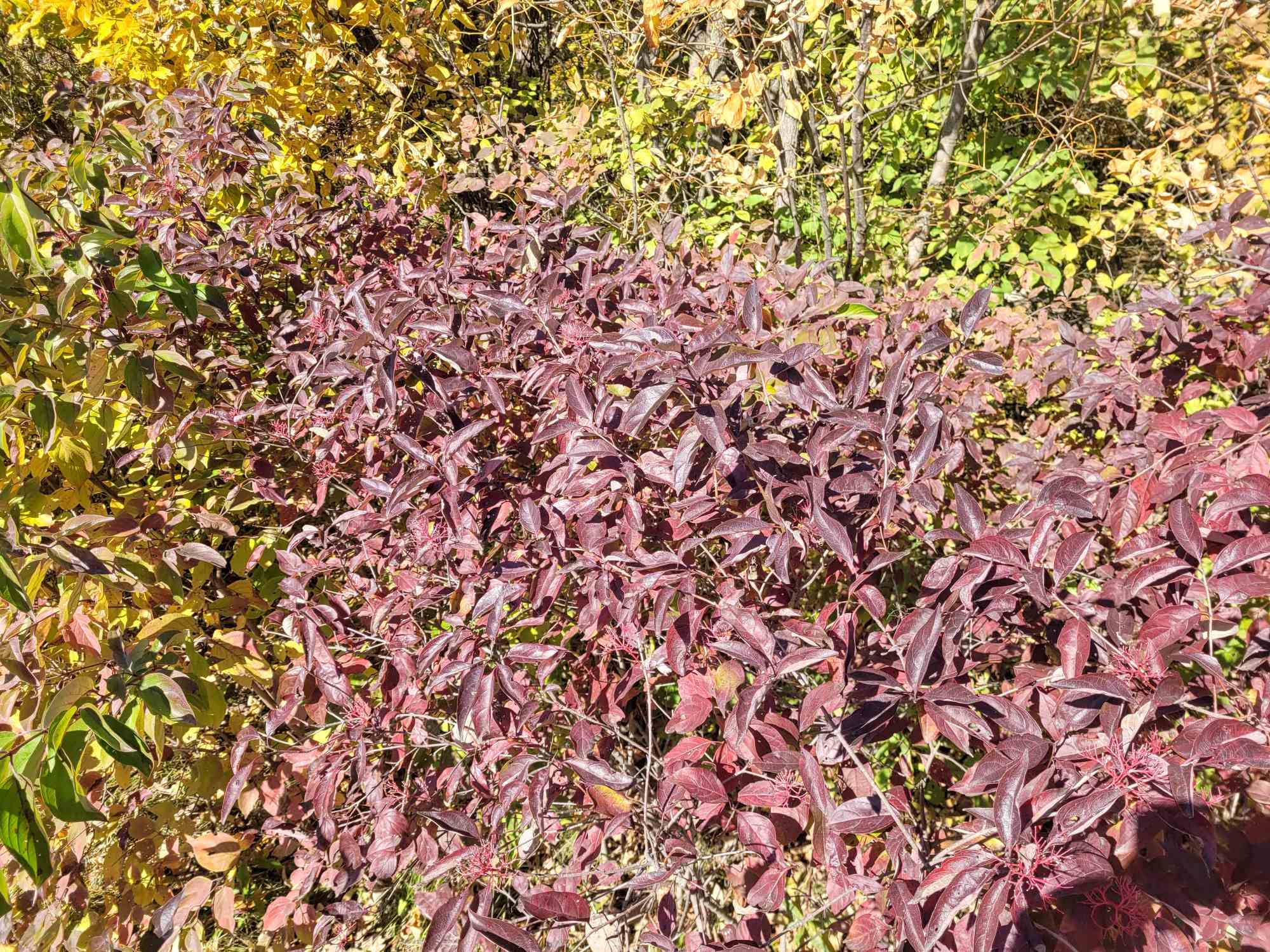
Gro-Low sumac (Rhus aromatica ‘Gro Low’): 3-4 feet tall and 6-8 feet wide. Foliage aromatic.
Nannyberry (Viburnum lentago): 15-20 feet tall and 8-12 feet wide. White flowers in April and May. Black fruits persist.
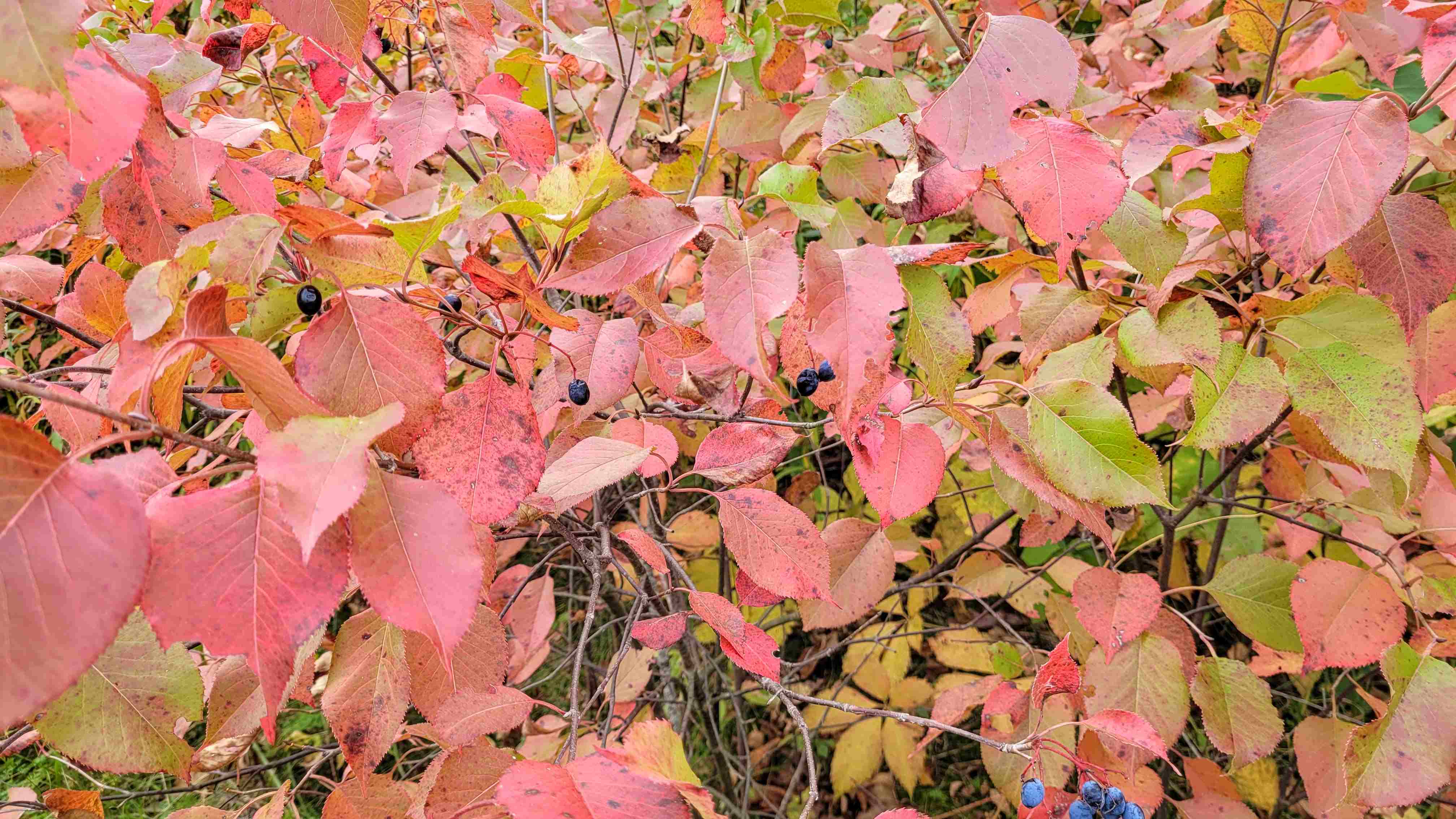
Callery pear is a mid-sized tree with white flowers in April and May. A few options to substitute for this species include:
Serviceberry (Amelanchier canadensis, A. laevis): 15-25 feet tall and wide. Some cultivars available in tree-form. White flowers in April and May. Edible fruits. Yellow-orange-red fall color.
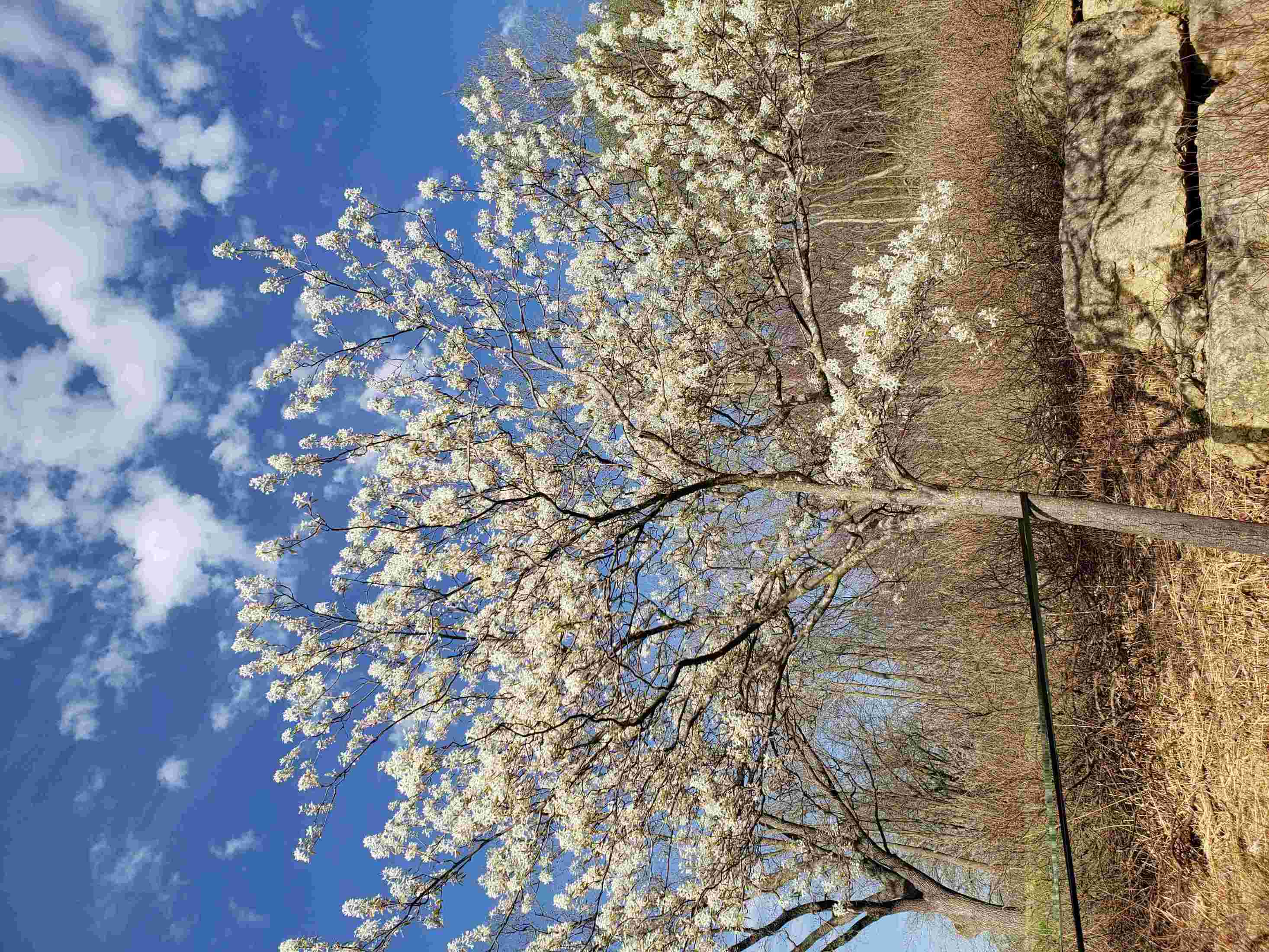
Musclewood (Carpinus caroliniana): 20-35 feet tall and wide. Hop-like fruits. Yellow-orange fall color.
Pagoda dogwood (Cornus alternifolia): 15-25 feet tall and wide. White flowers in May and June. Orange-maroon fall color. Branches horizontal.
Iowa crabapple (Malus ioensis): 15-25 feet tall and wide. Pink flowers in May. Yellow-orange fall color.
American plum (Prunus americana): 15-25 feet tall and wide. White flowers in April. Fruits edible. Orange-red fall color. Can form a thicket or spread; will require annual maintenance pruning.
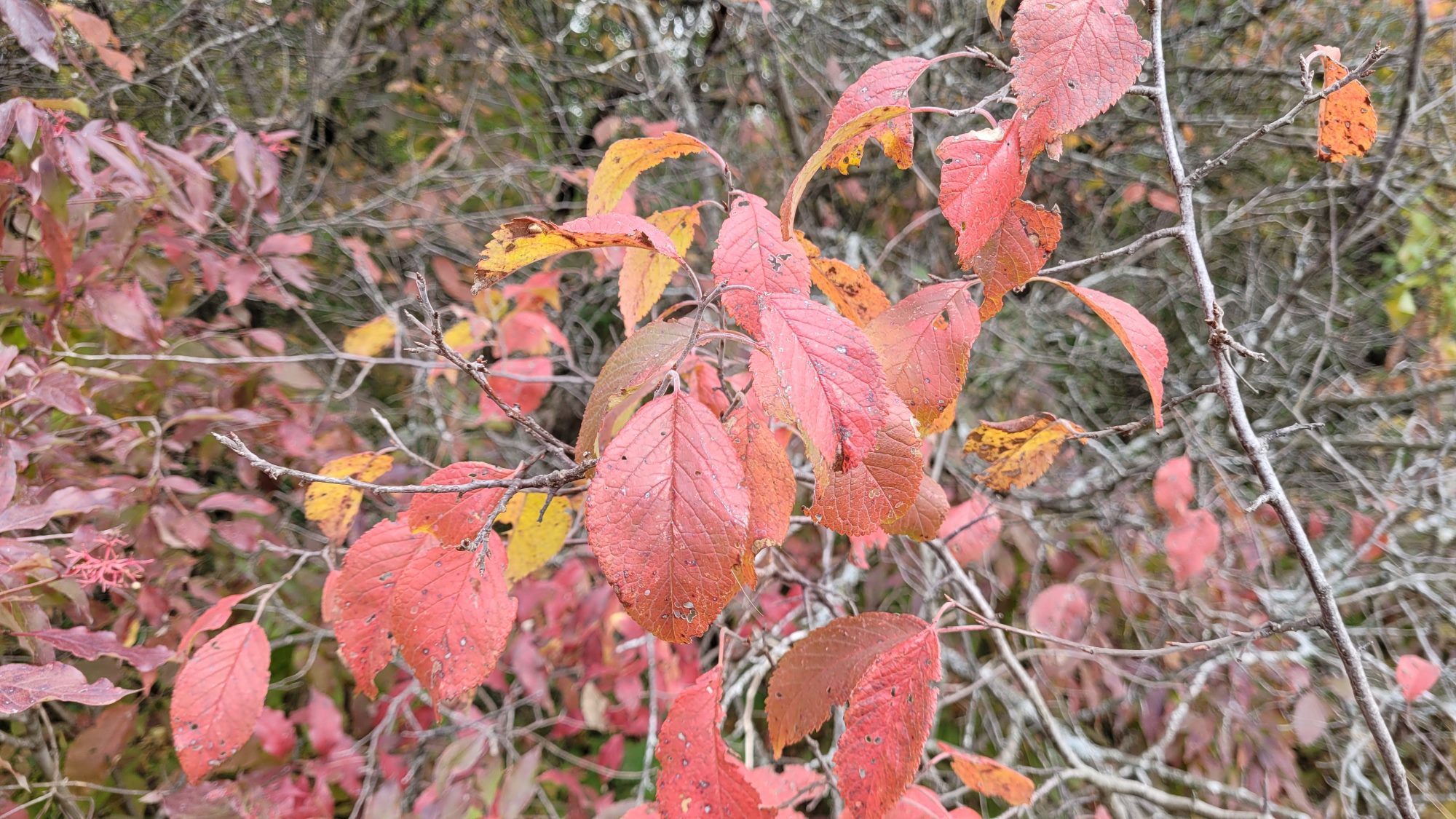
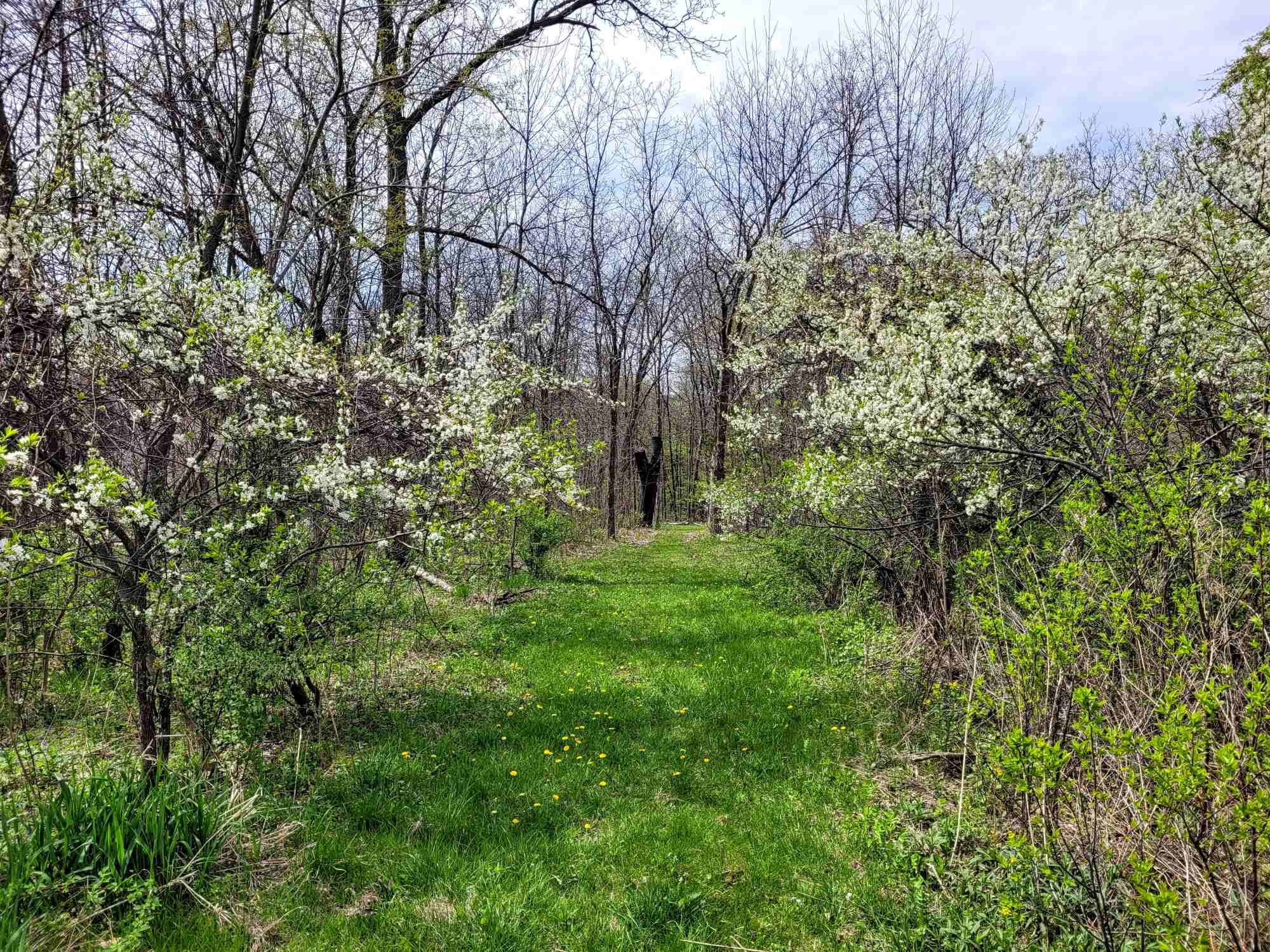
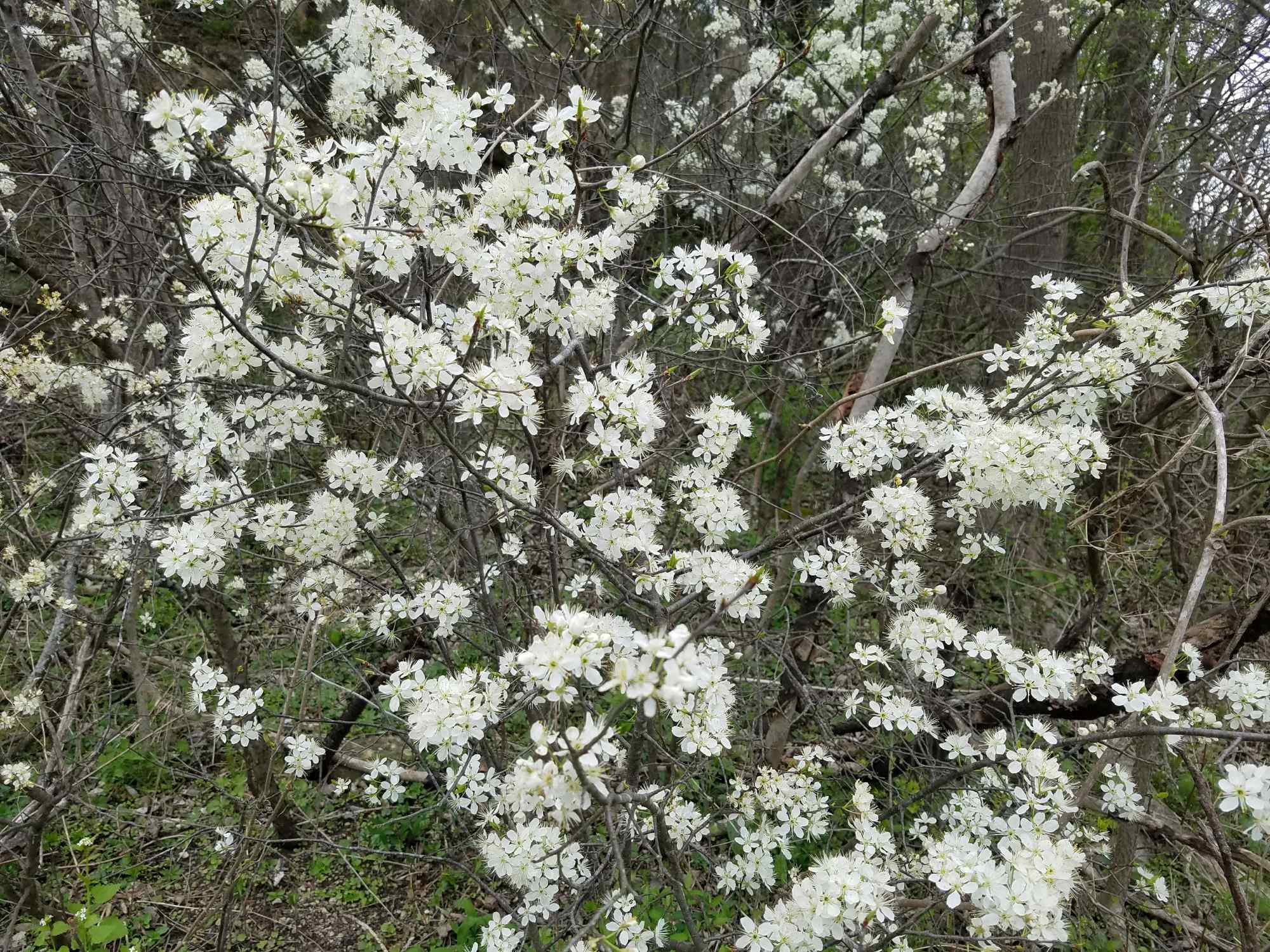
The annual Greenspace Native Plant Sale will have these and many other species available to pre-order, starting April 1. Plants will be available for pickup on May 24 and 25.
Originally appeared in the Territory Times November 2020
Oak woodlands once dominated the Jo Daviess County landscape. The woodlands had open canopies, allowing plenty of light to ground to recruit oak trees for the next generation and support a diverse understory of herbaceous and shrubby plants. This plant diversity supported a wide variety of wildlife, including songbirds, insects, mammals, and reptiles. Through changes in land management, once-dominant oaks are being replaced by shade-tolerant maple, ash, elm, black walnut, basswood and hackberry trees in a process called mesophication. As a result, the canopies of our woodlands are denser and less light reaches the ground, reducing herbaceous and shrub vegetation, oak recruitment, and wildlife diversity.SEVERAL REASONS FOR REDUCTION
European settlement led to the decline in oak woodlands. Lead mining operations in Jo Daviess County used oak wood to fire smelters. Mining gave way to farming, which had a greater impact on oaks, as trees were felled to increase farming opportunities. As equipment mechanized and grew increasingly larger, more acres of oak communities were removed. This is still occurring, as windrows and waterways continue to be bulldozed for the almighty row crop.
Jo Daviess County has a large number of grazing animals, now and historically, because the rolling topography makes row-cropping more challenging. Grazing practices mimic fires by preventing seedlings of woody species from surviving. Although grazing maintains an open structure within woodlands, it also prevents oak recruitment. Grazing modified the shrub layer to what is observed today: An overabundance of unpalatable thorny species, such as raspberry, gooseberry, and prickly ash.
Historically, the shrub layer included hazelnut, serviceberry, viburnum, dogwood, and witch hazel. If you purchase these species from a nursery today, the planting requirements include full-to-partial sun: Conditions present when these species thrived in our open oak woodlands.
The greatest change in land management that negatively impacted oak woodlands, both historically and today, was cessation of fires. Historically, fires that crossed this landscape prevented fire-sensitive species, such as maple, ash, elm, and basswood, from dominating the landscape and kept the oak canopy open, allowing continued recruitment of oak saplings. The mature oak canopy we enjoy today is the legacy of fire management implemented by Native Americans.
BEST PRACTICES IN WOODLAND MANAGEMENT
Oak woodland management is occurring across the Midwest, including The Galena Territory, to reverse mesophication and ensure oak trees remain dominant for the next 200 or more years. Best management practices to ensure oak recruitment and increased ground- and shrub-layer plant diversity include: control invasive species; re-introduce prescribed fire; control the deer population; and remove trees from the canopy and mid-story so more sunlight reaches the ground.
Observations and studies at other sites across the Midwest show that oak woodlands have the best chance of being sustained through a multi-faceted approach using these management strategies. These projects are long-term and will have an impact for many generations to come.
YOU CAN HELP
Property owners can help by encouraging oak trees to thrive on private property: Gather and plant acorns and plant new oak trees. Several species of oaks will be available during the spring native plant sale in 2021. Watch for more information about it in the new year. To protect existing trees, pruning or trimming should only occur in the dormant season, after mid-to-late October to reduce the spread of oak wilt disease. A second way to protect existing trees is to avoid negative impacts to their root system, including soil compaction, top soil addition and digging too close to the tree.
Lastly, consider selective cutting of trees that are growing below and into the canopy of an existing oak, reducing competition for light, water and nutrients. Oak release is encouraged within The Territory, either on your own lot or within the Greenspace, through the Greenspace Stewardship Program.
Woodpecker Damage and Possible Prevention
Woodpecker damage to houses is common and cited throughout the continental United States. Many homes in The Galena Territory experience woodpecker damage due to being located on wooded sites.
Woodpeckers are a protected species by the Migratory Bird Treaty Act.
Woodpecker activity is most active in April /May and September/October.
Larger, round holes are made for roosting/nesting. Smaller, irregular damage is a sign of foraging. Shallow round or cone-shaped damage is a result of drumming (pecking to mark territory or to locate a mate). Not all drumming/pecking produces damage.
There is no method of woodpecker deterrence that will fully abate damage. From the information and studies on the following pages, mylar holographic tape, streamers, or windsocks are the most effective at reducing damage.
Suet feeders may deter foraging behavior or may attract more woodpeckers to your area. If you use suet, see if damage is improving or becoming worse and modify use based on that.
- Suet should not be used in summer months due to matting on woodpecker feathers, which can be harmful to the birds.
- Quick response to damage is a form of deterrence.
- Holes can be used by other birds as nesting sites.
- Water can potentially enter through the hole, causing rot/damage over time.
If applicable to your Supplemental Declarations (see: Architectural Review), it may be possible to use a non-wood siding, such as LP siding or cement board.
At this time, based on the summary above and the article summaries presented on the following pages, the recommendation is to respond as quickly as practicable when new woodpecker damage is observed. This includes patching holes and installing holographic mylar tape to areas experiencing repeated damage.
Emily Lubcke, Natural Resources Coordinator
Prepared: March 2023
Originally appeared in the Territory Times July 2020
Be careful around wild parsnipThis is a reminder to all property owners to be careful if working in your yards around wild parsnip (Pastinaca sativa) or thinking about adding it to a bouquet. If the sap contacts your skin in the presence of sunlight, it causes a chemical reaction that creates burns and blisters. This is called a phytophotodermic (plant + light + skin) reaction. For some people this makes the skin very tender. For others, it leaves purple scars that will darken to a brown color and last for several years before fading.
If you are trying to remove this plant or if you might come into contact with it while doing other yard work, please wear shoes and socks, long pants, long-sleeve shirts, and gloves. I know this sounds hot for the middle of summer, but it’s best to protect your skin from the sap.
Herbicide may be applied to the plant in its vegetative state only. Wild parsnip bolts and flowers from mid-June through August. Once the plant flowers, the energy stored in its taproot is used to complete its life cycle, or produce seed. Therefore, it is not actively bringing in and storing energy in its roots and will not transport the chemical into the root where it affects a kill.
The best method for removal after wild parsnip has flowered, is to cut the root an inch or more below the soil surface with a sharp spade or shovel and then remove the cut plant to shrivel and die. This method doesn’t damage the stem or leaves, but reduces the chance of the sap contacting your skin. The Prairie Enthusiasts offers specialized “Parsnip Predators” for sale. It’s actually a handy tool for all kinds of weeding, such as Queen Anne’s Lace, tap-rooted thistles, and more. Please view their website to find out how to get one: www.theprairieenthusiasts.org then click on eStore.
Another method for control of large-scale patches is timed mowing. The Galena Territory Association has done this in several areas and has greatly reduced the amount of plants. Mowing should be done when most of the stand is in full-flower or just as seed formation begins. Typically, the 4th of July is about the window for that.
Originally appeared in the Territory Times February 2021
Historically, our rolling hills were covered by widely spaced oak trees, complemented occasionally by shagbark hickory, black cherry and elm. The understory included flowering shrubs and small trees, providing vertical heterogeneity for the songbird community. The woodland floor was covered by a rich herbaceous layer that protected the soil from erosion.Currently, through a process known as mesophication, openings between widely-spaced mature oaks have been filled by shade-tolerant species, such as ash, hackberry, basswood and maple. Seedlings of these species can grow and mature in low light conditions; however, those conditions prevent oak and hickory trees from maturing due to having greater light requirements.
Our woodland structure is shifting toward a densely shaded closed canopy condition. This changes understory vegetation: Shrubs are pushed to the edges, where they can meet light requirements for flower and fruit production. Herbaceous species diversity decreases to those that can handle low-light and grows sparsely. With these changes, there is less food available to foraging insects and animals and an increased chance for erosion.
Woodland management goals were established by the Greenspace Committee in 2013. The primary focus of these goals is to improve the health of the woodlands through selective tree removal, invasive species control, and prescribed fire. In turn, this will preserve and promote floral and faunal species diversity, another goal. A couple of woodland management projects have gone forward so far: Bartoli Woods, southeast of the intersection of Territory Drive and Wachter Road and “Stand 1” of the Stony Ridge Woods. Other sites are being managed as well, including the Owners’ Club Woods, Cameron Savanna, and The Point.
The effort will continue this winter in the Stony Ridge Woods. One location for the work is southwest of the trail between the Stony Point cul de sac and the lookout platforms, “Stand 2.” This area is dominated by white oaks, with some red and bur oaks present. It is undergoing mesophication by basswood, hackberry and bitternut hickory and work will focus on reducing the amount of these species. The trail between the base and the top of the ridge runs through this section of the woods and will be temporarily closed during the work. Please heed the “trail closed” and “tree work ahead” signs.
A second area in the Stony Ridge Woods (Stand 3) is between the top of the ridge and Territory Drive, northeast of the trail from the cul de sac. This area is dominated by red oaks and basswood, but is being encroached by sugar maple and the work will focus on the maples and creating canopy gaps. Lastly, we will be doing follow up work in Bartoli Woods, which is six years out from initial management efforts.
Woodland management is a long-term endeavor and can take decades before significant oak regeneration is obvious. But it’s crucial to do this work to retain our oak woodlands for future generations of flora and fauna—and for my great grandkids.

